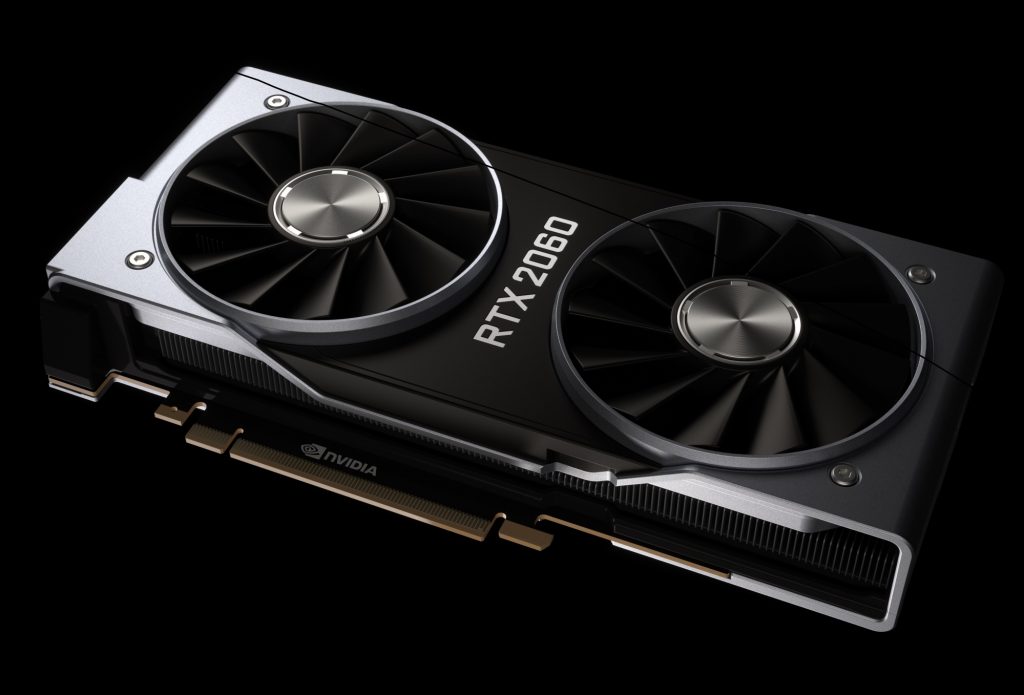After two years of stagnation, PC gamers are itching to get their hands on next generation graphics cards from Nvidia and AMD. Both companies delivered at this week’s CES, with a duo of new frame rippers that will certainly mildly whelm the PCMR.
Radeon VII: AMD’s 7nm Titan

AMD is targeting the high end market with their newest GPU. Dubbed the Radeon VII, thanks to its 7nm process, the card is designed match rival Nvidia’s RTX 2080. The Vega 20 based card is essentially a paired down Radeon Instinct MI50; a chip which is normally used for high end compute applications in the scientific field.
The Vega VII will feature 60 Compute Unites with a 1.45GHz base clock, and up to 1.8 GHz boost, with pegs its floating point performance at up to 13.8 TFLOPS. Which if true actually puts it closer to the 2080 Ti. Though whether it actually hits those speeds is a whole different ballgame. More on that later.
Perhaps its most interesting trick is the 16GB of HBM2, which has bandwidth up to 1.0 Terabytes(!) per second. This is over twice as fast as Vega 64, and faster than anything Nvidia has to offer, even in their high end Tesla offerings. That should make a huge difference for workstation applications that strongly benefit from fast memory.

The Radeon VII will launch on February 7th and retail for $699 USD. Which should make it an absolute steal given the 2080 Ti runs at an MSRP of $999. That’s if it can come close to the Ti.
Vega 20 is a hot and power hungry chip. More so than Nvidia’s top end Turing. Whether it consistently hits that boost clock on air is a question we don’t have the answer to yet. Which is perhaps why AMD kept comparing it to the vanilla 2080 during their press conference. Suddenly that $699 price tag becomes lot less attractive. Especially given its lack of features like dynamic hardware ray tracing and and intelligent super sampling.
A lot of people are calling the Radeon VII a stop gap until the true next generation AMD cards come out next year. However, I have a hunch that Navi will end up being a direct replacement for Polaris, not Vega. There’s no information to back that on, but given AMD’s recent behaviour and the sudden release of the RX 590, it makes sense. In the meantime, we have another month to wait to see how the Radeon VII will actually stack up against Nvidia’s power houses.
RTX 2080: The New Midrange King?

Meanwhile over at Team Green, Nvidia chose to take the covers off their latest “mid-range” chip. The RTX 2060 serves as the direct replacement for the aging 1060, packed full of new features, and price hikes, that we’ve come to expect from Turing.
The card features 1920 CUDA cores clocked at a nominal speed of 1.365 GHz, with a total floating point performance of 6.5 TFLOPS. In real world benchmarks, we find it runs toe-to-toe with last generations’s GTX 1070 Ti. Quite a nice improvement overall. We’re now finally seeing playable frame rates at 4K from a mid-level entry. Just don’t expect any miracles when it comes to ray tracing. Even with the latest updates in Battlefield V, the only game that really supports RTX, you can still expect your frames to be cut in half. That said, ray tracing is still largely a gimmick at the moment, and will likely remain that way for the foreseeable future. In regular raster performance, there’s a lot to like here. This may be the best Turing card yet.
Unfortunately, it’s not all sunshine and rainbows. For one, while you’re now getting 70 level performance in a 60 class card, you’re not paying 60 class pricing. Nvidia has hiked the cost of the 2060 to $349 for its Founders Edition. That’s a $50 price hike. We still don’t know what board partners will charge. Normally they’re cheaper than the Founders models. Given pricing for the 1060, these could start at $299, which would certainly make it a more attractive option. Though considering how prices still haven’t dropped for certain cards since the mining boom, I expect things to go up rather than down.
There’s also the matter of Nvidia going a little SKU happy with this card. According to rumours, there will be up to six different models of the RTX 2060, each with different memory configurations. Some with GDDR5, some with GDDR6, in either 3GB, 4GB, or 6GB configurations. That’s going to create a lot of confusion for consumers. Not to mention the fact that some games are already starting to push over 6GB of VRAM usage. Especially at resolutions greater than 1080p. AMD has been offering 8GB options in their mid-range cards for a while now, so it feels like Nvidia is cheaping out here. Which, given the price hike, is no es bueno.
The RTX 2060 6GB Founders Edition is set to launch on January 15th.





